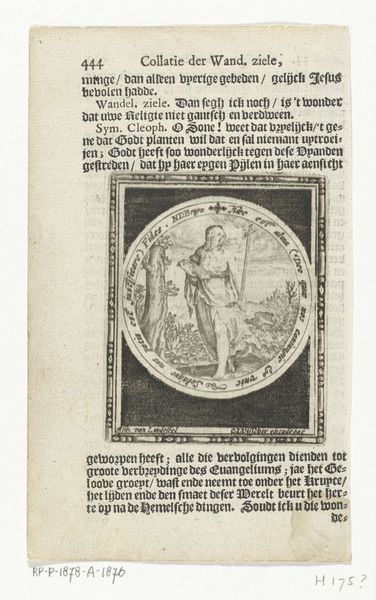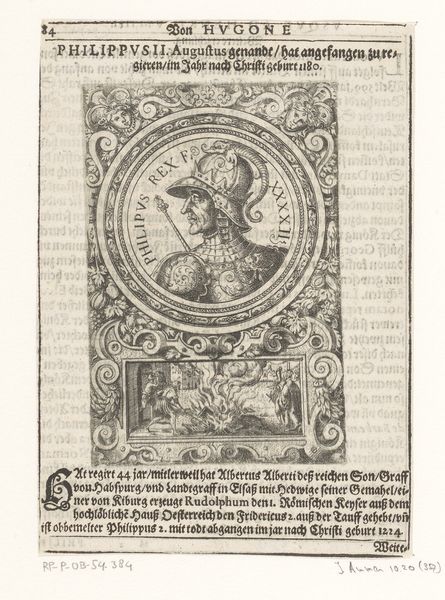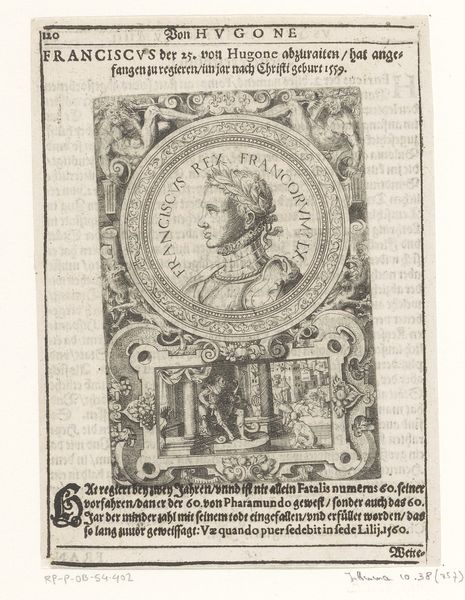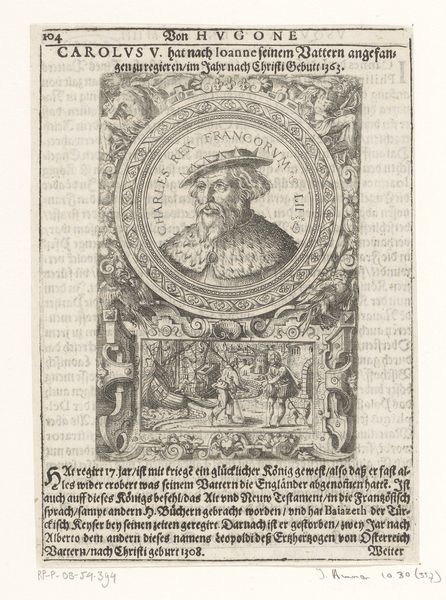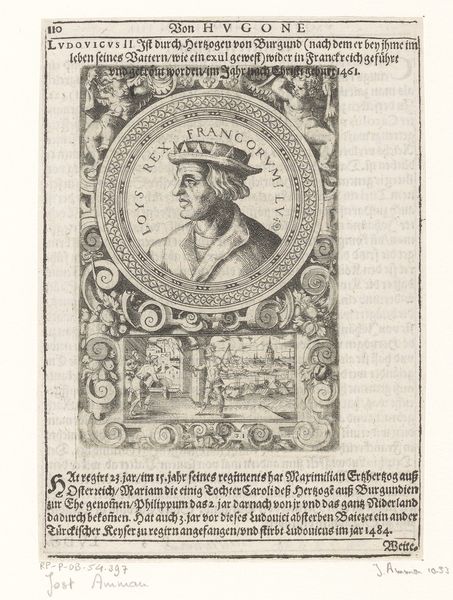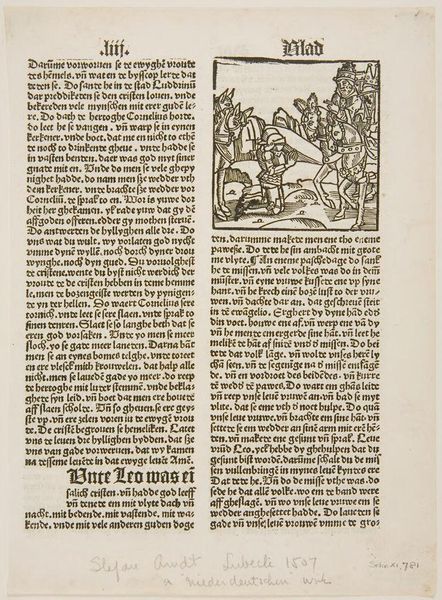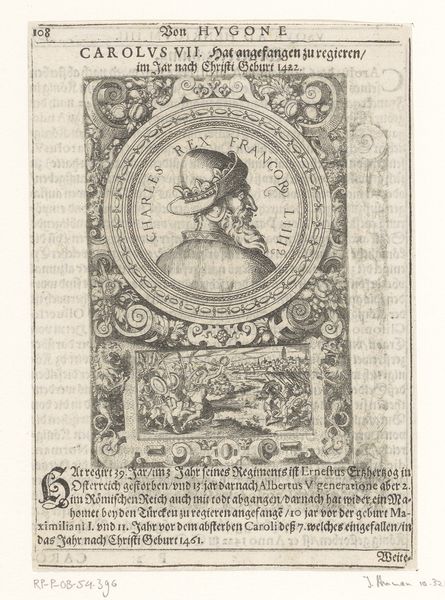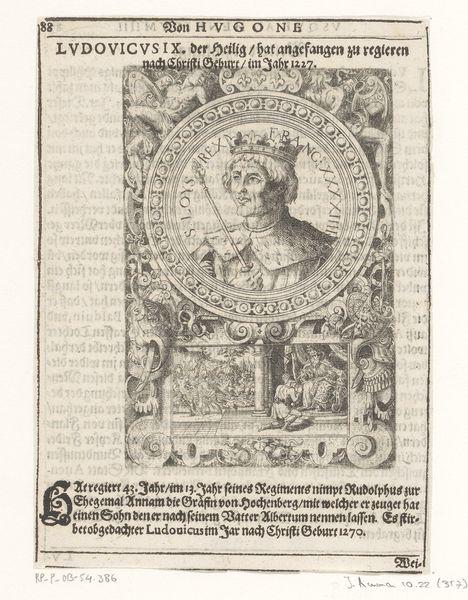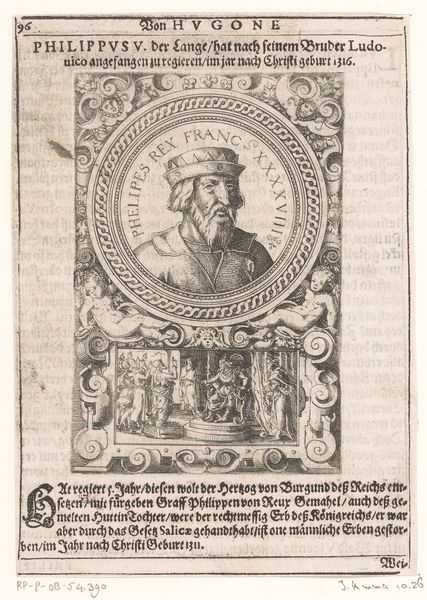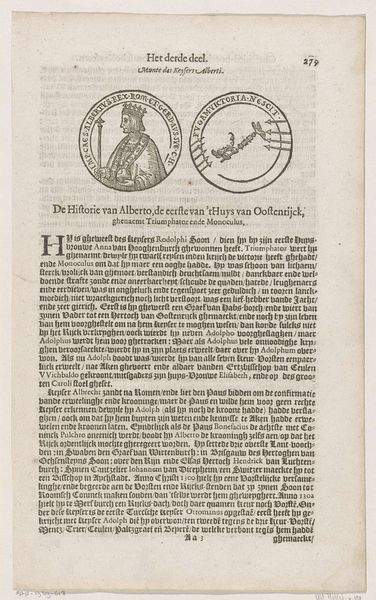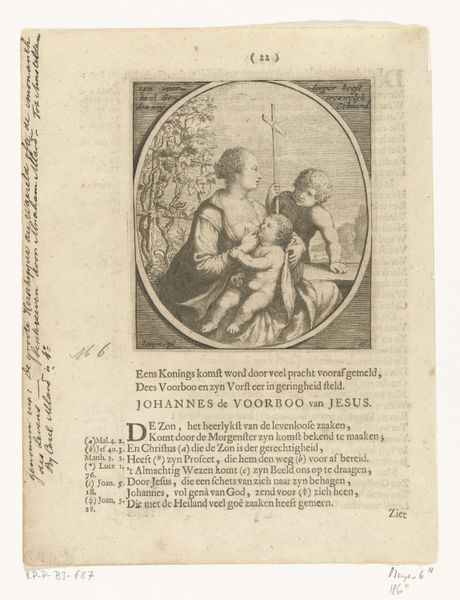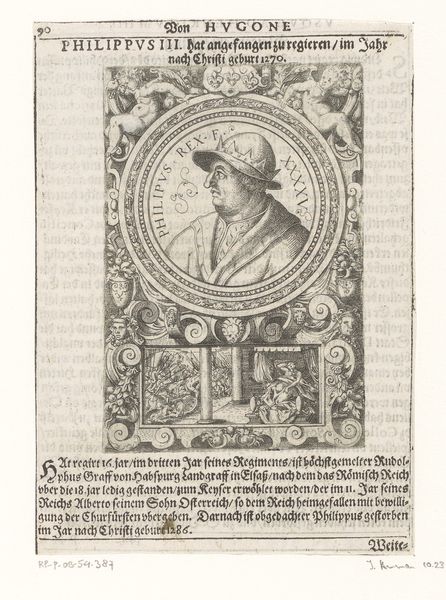
print, paper, engraving
#
allegory
#
narrative-art
#
baroque
# print
#
figuration
#
paper
#
engraving
Dimensions: height 78 mm, width 65 mm
Copyright: Rijks Museum: Open Domain
Editor: This is "Liefde (Charitas) met twee kinderen in medaillon" by Nicolaes de Bruyn, dating roughly between 1581 and 1656. It's a print, an engraving on paper, and it has such an ethereal, almost dreamlike quality to it. What do you see in this piece, particularly regarding its form and composition? Curator: Formally, the print presents a central medallion within a rectangular frame, immediately creating a contrast between curved and rectilinear forms. The engraving technique allows for a remarkable level of detail, but how do the lines contribute to a sense of depth and movement within the circular space, despite its rather flat presentation overall? Editor: I see what you mean. The density of the lines certainly suggests shadows, and there's a sense of layering, even though the image is primarily linear. The way the lines curve around the figures also contributes to the medallion's overall rounded feel, reinforcing that circular shape. Curator: Precisely. Consider, also, the visual weight distribution. The central figure of Charity dominates the composition. Observe how the engraver balances the light and shadow to direct the eye. Are you not led, ultimately, to decipher this presentation as an exemplar of balance and artistic strategy in engraving? Editor: I see how the contrasting tones guide your focus, but does limiting the analysis solely to form risk overlooking potential meanings related to its allegorical and narrative context? Curator: It is through the relationships established within the formal elements – the balance, the contrast, the distribution of weight – that any narrative can be made legible. Absent structure, there would simply be no image. The content becomes comprehensible because the visual composition provides an organization, and therefore access to content. Editor: That's a very interesting way of thinking about it; I'll have to consider how inseparable the two truly are. Curator: Indeed, formal analysis allows us to discover these subtle dialogues, as an approach to deeper visual insight, unveiling artistry with careful observation.
Comments
No comments
Be the first to comment and join the conversation on the ultimate creative platform.
